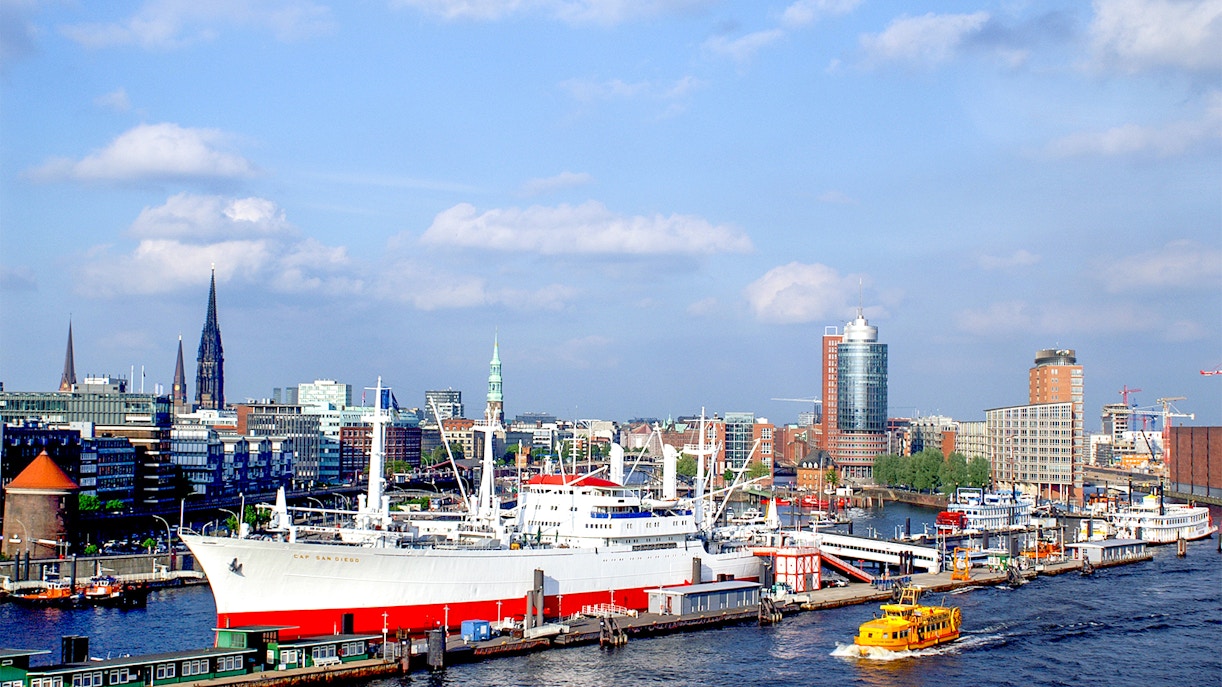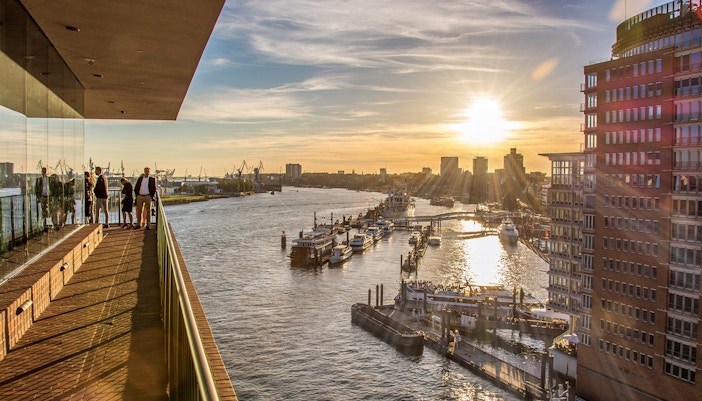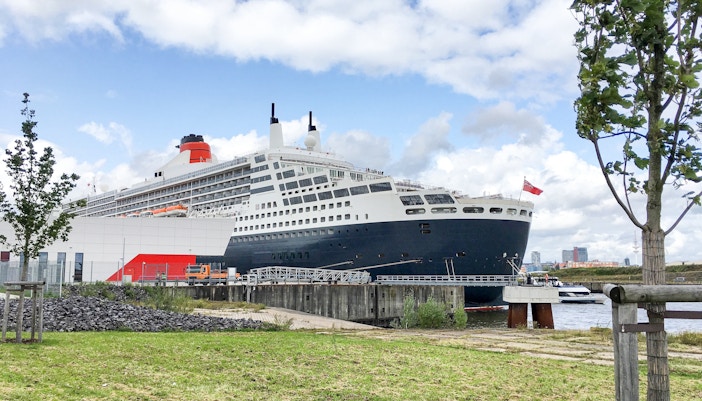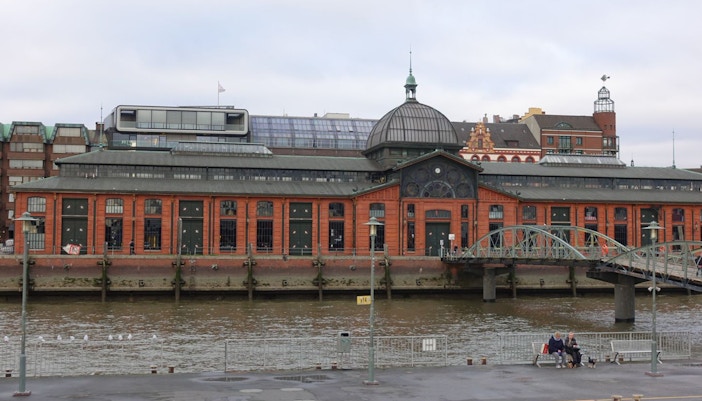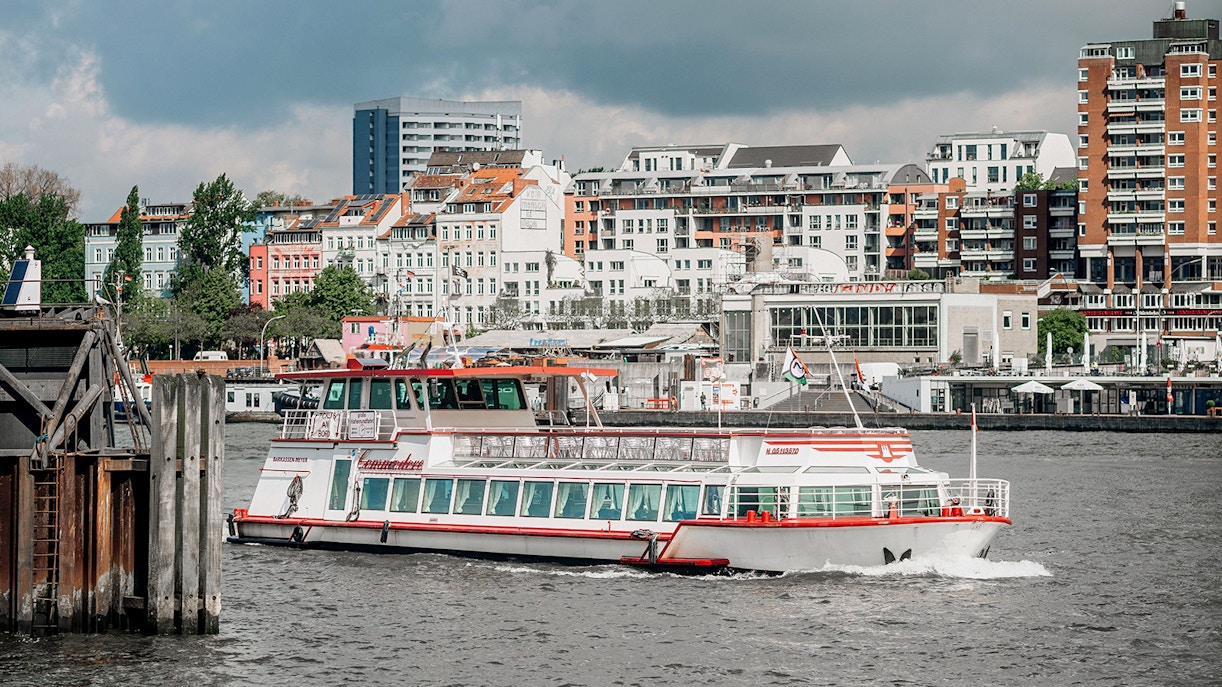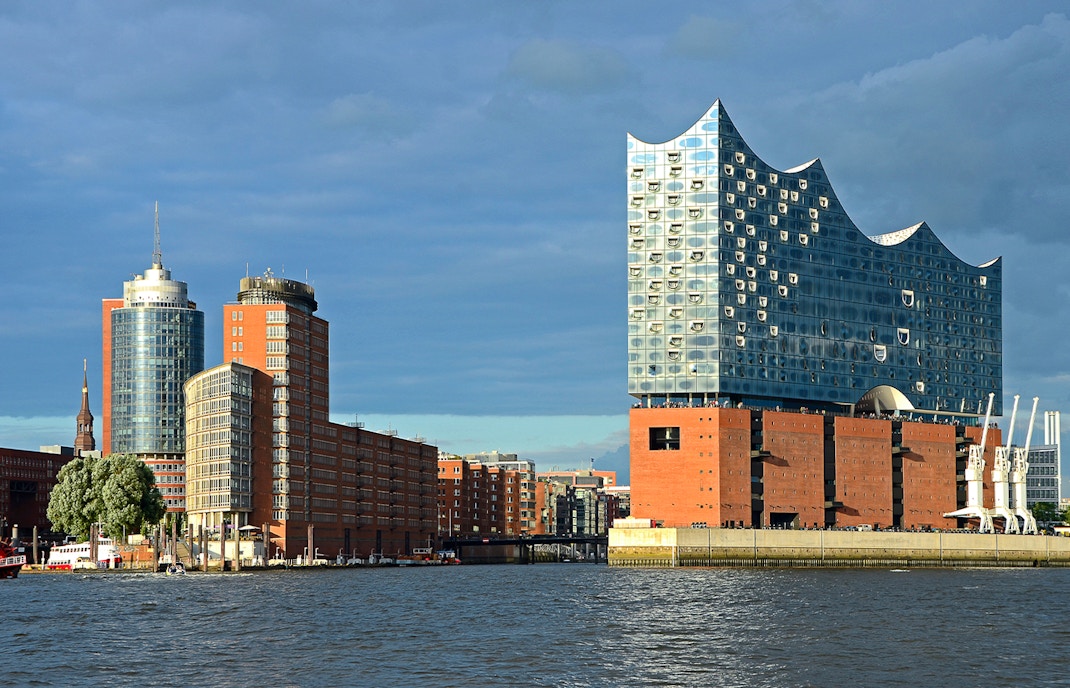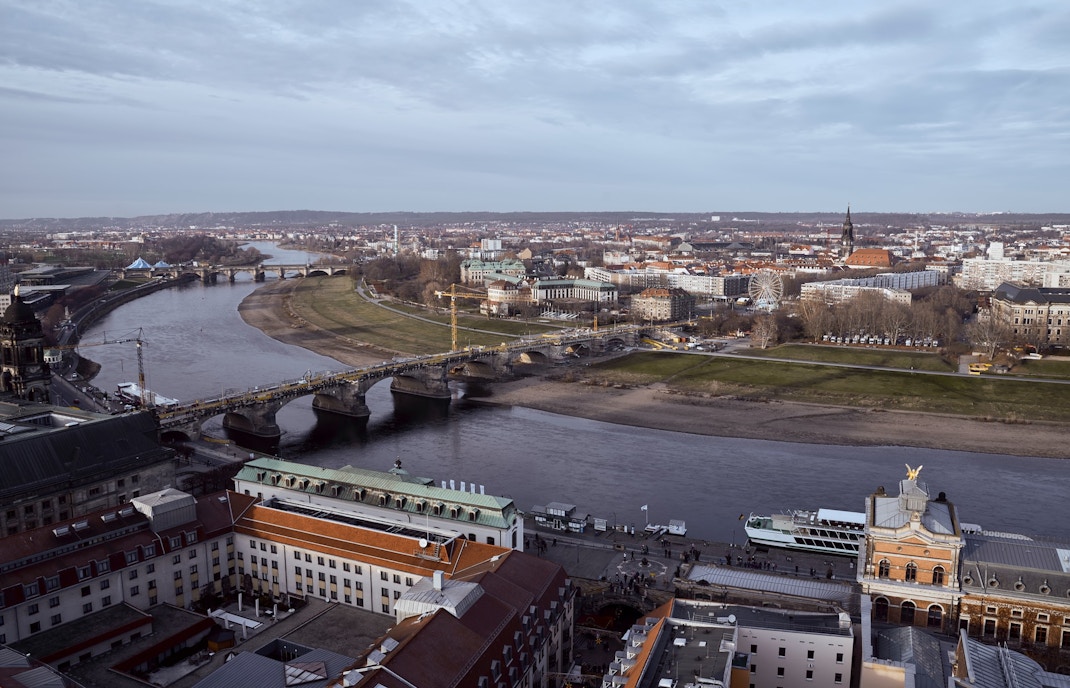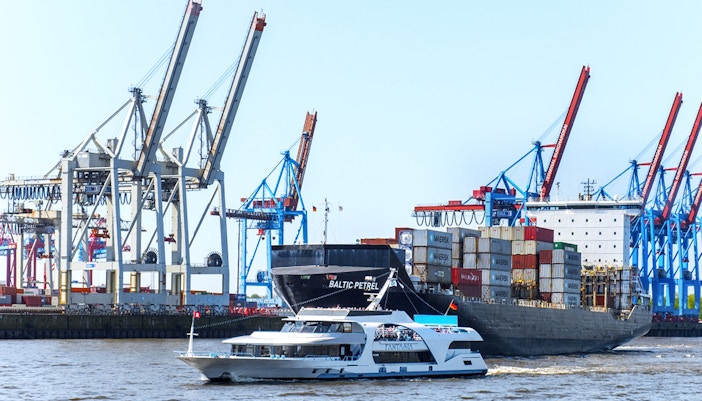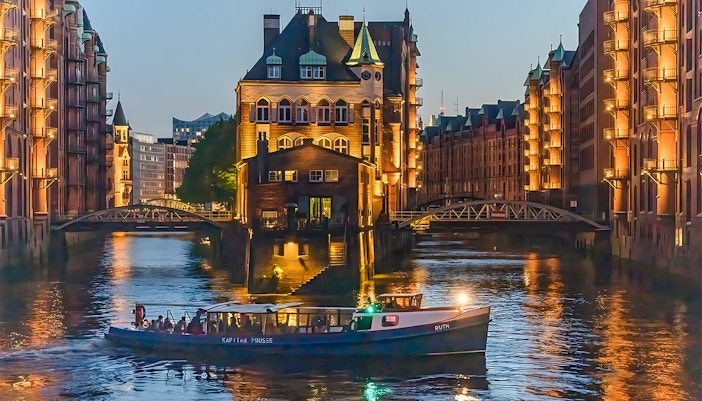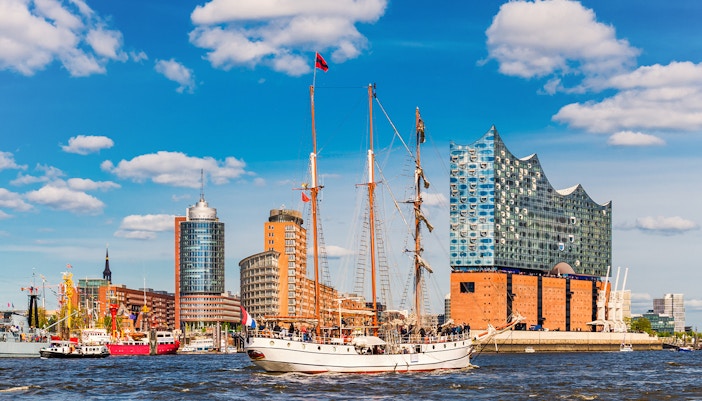Located on River Elbe, Hamburg Harbor is Germany’s largest seaport by volume and the third-busiest port in all of Europe. The harbor is always a part of every cruise ship’s route, and a one-day stopover here is a must!
Hamburg Harbor is one of the biggest attractions in the city not only for being the logistic center but also as a hub of modern culture. There are many museum ships, theatres, bars, hotels, etc., and a floating boat church that visitors can explore.
The annual birthday celebration of the Port of Hamburg is an integral part of Hamburg’s culture. At this event, tugboats perform ballets, fireworks explode at night, and cruise ships and old galleons are available for tours.

